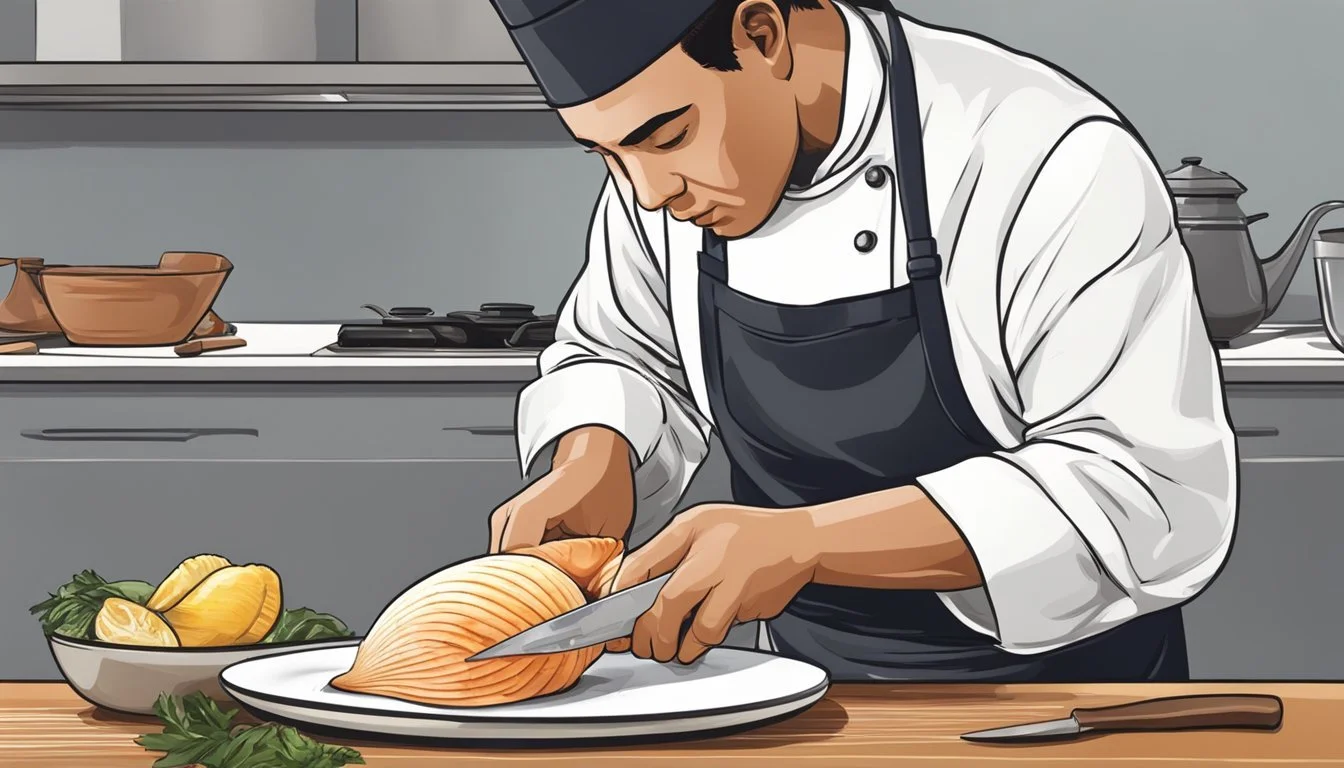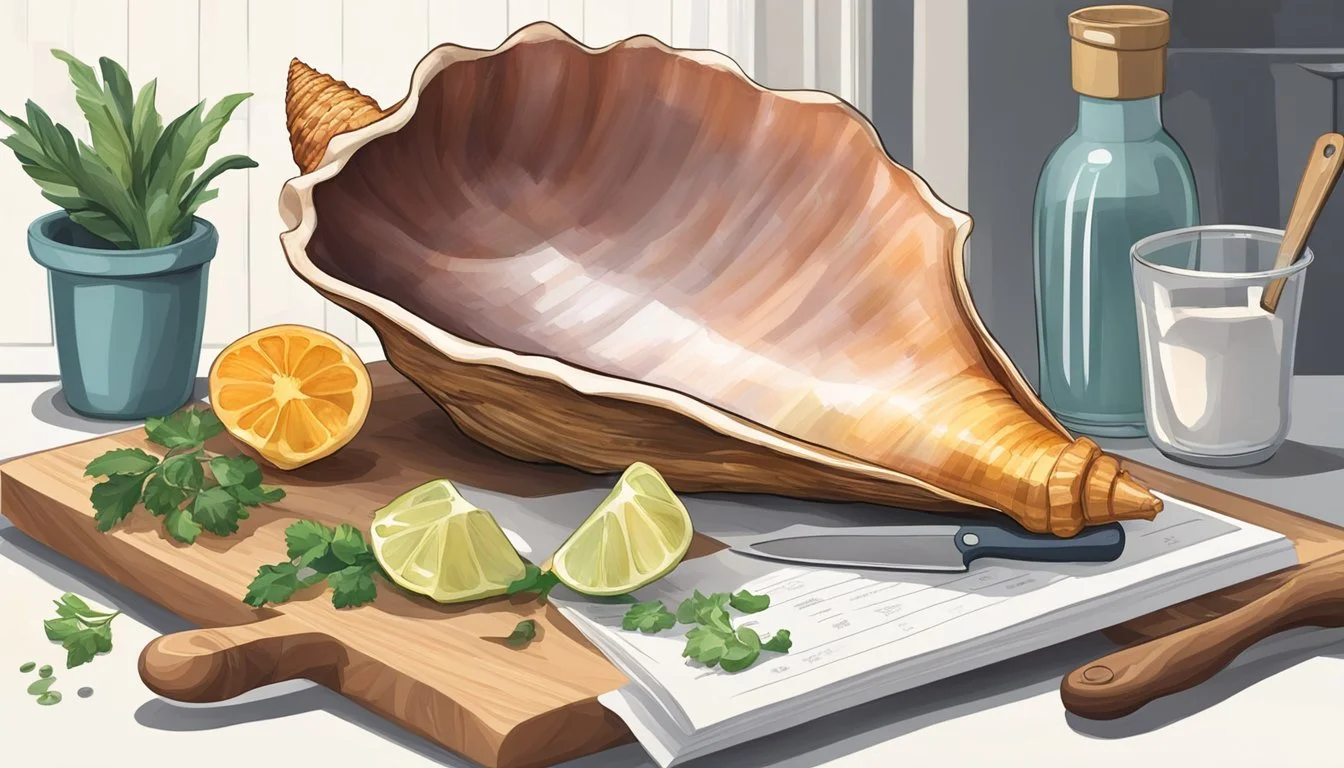How Do You Eat a Conch?
Unveiling the Secrets of Seafood Delicacies
Conch, a type of sea snail, serves as a culinary staple in many coastal and island communities, particularly in the Caribbean region. Its meat is renowned for its versatility in cooking and distinct, somewhat sweet flavor. Eating conch can take many forms, from appetizers to hearty main courses, reflecting the cultural and culinary practices where it is most popular. It is typically prepared by tenderizing the tough meat through pounding and then incorporating it into various dishes.
One common method is frying the conch meat after it has been tenderized and breaded, resulting in a crispy, golden exterior with a tender inside. Another is to simmer it in soups or stews, where it takes on the flavors of the other ingredients. The process of tenderizing is crucial, as it transforms the conch's naturally chewy texture into something more palatable. In addition, steaming conch with aromatic vegetables and seasoning is a technique that infuses the meat with flavor while retaining its tenderness.
Understanding Conch
Conchs are marine mollusks with a high nutritional value, often found in the Caribbean and Florida waters. They play a significant role in the cuisines of these regions.
Species Identification
The most commonly consumed conch species is the Queen Conch (Strombus gigas), known for its large, sturdy shell. Other species are also referred to as conch but can differ vastly in size and habitat. The Queen Conch is native to the warm waters of the Caribbean and the sandy seabed of Florida's coastlines, where it's an integral part of the ecosystem.
Nutritional Profile
Conch meat is a lean source of protein and has a low fat content. It offers essential nutrients such as omega-3 fatty acids, vitamins, and minerals. The following table outlines the key nutritional components of conch meat:
Nutrient Value per 100g Protein 24 grams Fat 1 gram Omega-3 500 mg Vitamin A 100 IU Vitamin B12 1 mcg Iron 3 mg
These values may vary slightly based on the specific species of conch and its preparation method.
Selection and Preparation
Selecting a fresh conch and properly preparing it is paramount for a satisfactory culinary experience. The conch should transition from a tough, rubbery state to a tender delicacy, ready for various cooking methods.
Choosing Fresh Conch
Freshness is critical when selecting conch meat. Ideally, one should look for conch with a brilliant white or pink hue and no discolorations. Fresh conch meat should have a mild ocean smell; any strong, off-putting odor is an indication that the conch is no longer fresh. Moreover, if purchasing conch in its shell, one should check for the presence of suction when touching the operculum, which indicates the conch is alive and fresh.
Cleaning and Tenderizing
When ready to prepare, a sharp knife is essential in removing the conch meat from its shell. Careful cleaning is crucial, as residue can affect the taste and texture. Due to the naturally tough texture of conch meat, tenderizing is an important step. This is commonly done by laying the meat flat and giving it a firm pounding with a mallet, ideally under plastic wrap to prevent splatter. One may also use a tenderizer hammer or even the back of a knife to pound the meat, which should make it softer and more palatable.
Storing Conch Meat
If one does not intend to use the conch meat immediately, proper storage is necessary to maintain freshness. The meat should be stored in the coldest part of the refrigerator, wrapped tightly in plastic wrap or inside an airtight container, and used within two days. For longer storage, conch meat can be frozen. When freezing, one should place the meat in a resealable bag with as much air removed as possible to prevent freezer burn. Frozen conch can be kept for up to three months. When ready to use, it should be thawed in the refrigerator overnight.
Cooking Techniques
Conch can be transformed into a delicious meal using various cooking methods. Each technique draws out unique flavors and textures, ensuring that there is a preparation style to suit every palate.
Boiling and Stewing
To boil conch, chefs often simmer it in a large pot of salted water. This process typically lasts for about an hour, allowing the meat to become tender. Stewing involves adding the conch to stews or soups like conch chowder, letting the meat slowly cook and absorb the flavors of the broth and aromatics such as garlic, onions, (What wine goes well with onions?) oregano, and thyme.
Frying Conch
Frying is a popular way to prepare conch, creating a crispy exterior while keeping the inside tender. The technique includes coating the conch in a batter made of flour and beaten eggs or milk, then deep frying the pieces. The cooking times will vary depending on the size of the conch pieces being used.
Steaming Conch
For steamed conch, one begins by heating oil in a sauté pan, adding garlic and onions and cooking until the onion becomes fragrant. Sweet peppers are then introduced, with subsequent additions of tomato paste, tomatoes, and thyme. The conch is finally added, being cooked through steam which keeps it tender.
Preparing Raw Dishes
Raw dishes, such as ceviche, require conch to be tenderized and then marinated in citrus juices, typically lime or lemon, along with onions, salt, and pepper. The acidic marinade effectively cooks the conch, making it suitable to eat without the need for heat. It's a cool, refreshing way to appreciate the conch's natural flavor.
Conch meat can be a versatile ingredient in the hands of an imaginative cook, adapting to various cooking techniques from boiling to serving it raw in ceviche.
Conch Recipes
Conch, a popular seafood in Caribbean cuisine, can be enjoyed in numerous dishes ranging from refreshing salads to hearty chowders. These recipes offer a taste of the tropics with fusion of flavors and ingredients like lime juice, tomatoes, and onions.
Conch Salad
A conch salad features raw conch meat, which is tenderized and then diced. It's marinated in a zesty dressing of lime juice, tossed with onions, tomato, and bell pepper for crunch and color. One might add a pinch of black pepper to enhance the taste. This dish is appreciated for its refreshing flavor and is often served chilled.
Conch Fritters
Conch fritters are savory bites made by combining minced conch meat with all-purpose flour, eggs, and a mix of diced onions and bell pepper. The batter is seasoned with spices, formed into balls, and deep-fried in a frying pan until golden brown. These fritters are commonly served with a dipping sauce for an added layer of flavor.
Conch Chowder
Conch chowder is a hearty, comforting soup that's rich in flavor. The broth typically includes onions, garlic, tomatoes, and thyme, simmering together to create a flavorful base. Tender chunks of conch meat are added to the mix, along with vegetables, and sometimes rice, transforming the chowder into a fulfilling meal showcasing the essence of konk.
Cracked Conch
Cracked conch involves tenderized conch meat that's breaded with all-purpose flour and eggs, then fried to a delightful golden brown. The result is a savory and crispy exterior with tender seafood inside. It is often served with a side of dipping sauces, embodying the inviting taste and texture that make Caribbean cuisine celebrated.
Serving Suggestions
Conch, a traditional seafood staple in the Bahamas, can be enjoyed in various ways—from raw in salads to breaded and fried. Each preparation method offers a different texture and flavor profile, suitable for diverse taste preferences and meal occasions.
Accompaniments and Pairings
When serving conch, one might consider a range of accompaniments and pairings to enhance its delicate sea flavor:
Raw: Conch ceviche, paired with a vibrant citrus marinade, benefits from the fresh addition of diced orange, celery (how long does celery last?), and a hint of scotch bonnet pepper for spice.
Salad: Tender strips of conch work well in salads, embracing fresh flavors and adding a seafood twist. Pair with a tangy dressing of vinegar and a bit of ketchup for a Bahamas-inspired touch.
Fried: Breaded and deep-fried cracked conch can be complemented by bold dips such as tartar sauce or a spicy ketchup, balancing the golden crust's richness.
Recipes: Traditional Bahamian dishes often suggest pairing conch with starchy sides like plantains or rice to provide a balance to its chewy texture.
Presentation and Garnishes
When it comes to plating:
Raw: Serve ceviche-style conch in elegant glasses, accentuated with fine slices of orange and a celery stick garnish to add color and a crisp texture contrast.
Salad: Feature conch salad in a clear bowl to showcase the fresh medley of ingredients, garnished with a sprinkle of fresh herbs.
Fried: Present cracked conch on a platter lined with lettuce, accompanied by small bowls of dipping sauces for interactive enjoyment.
Textures: Regardless of the serving method, ensure to showcase the conch's unique texture, whether it's the tenderness of simmered meat or the desirable crunch of a golden-fried outer layer.
Health and Safety
When consuming conch, individuals should be aware of potential allergic reactions and adhere to safe consumption practices to enjoy its distinct flavor and high protein content. Proper cooking techniques are key to ensuring safety.
Allergy Information
Conch, like other shellfish, may trigger allergic reactions in some individuals. Common symptoms of a shellfish allergy include hives, stomach upset, and in severe cases, anaphylaxis. It is crucial for individuals with a known shellfish allergy to avoid conch and to consult with an allergist if considering consumption.
Safe Consumption Practices
To reduce the risk of foodborne illnesses, conch should be purchased from reputable fish markets where freshness can be assured. Precooked conch and dishes that include it should reach an internal temperature of 145°F to ensure safety. When preparing conch, cross-contamination with raw foods should be avoided, using separate utensils and cutting boards.
Cooking: Fully cook conch to eliminate harmful pathogens.
Handling: Wash hands before and after handling conch.
Storing: Keep conch refrigerated at 40°F or below before cooking.
By responsibly sourcing and cooking conch, consumers can safely enjoy its unique flavor profile and nutritional benefits, including its considerable protein content.
Cultural Significance
The conch holds a prominent place in Caribbean culture, both as a staple in local cuisines and as a driver of economic activity. The following subsections detail the creature’s importance in Caribbean dining and its impact on the economies of island communities.
Conch in Caribbean Cuisine
In the Caribbean, the conch is more than just seafood; it is an essential ingredient in the region's culinary identity. The marine mollusk is known for its versatility and is a feature in an array of dishes. In the Bahamas and the Florida Keys, conch fritters and conch salads are ubiquitous, often characterized by their tender meat encased in a crunchy coating or mixed with fresh, zesty ingredients. Bermuda also relishes conch in its traditional preparations, joining a collective Caribbean appreciation for this delicacy.
Bahamas: Conch salad, conch fritters
Bermuda: Conch stew
Florida Keys: Conch chowder
Conch in Local Economies
The conch is not only central to Caribbean cuisine but also to the economies of many island nations in the region. For instance, in the Turks and Caicos Islands, the conch symbolizes national heritage and generates revenue through both local consumption and export. The Bahamas, with its conch appearing on the national coat of arms, similarly benefits from the mollusk's economic contributions, particularly through fishing and tourism industries. These industries pivot around the conch as a resource, with significant implications for local employment and sustainable practices.
Turks and Caicos Islands: National heritage, export
Bahamas: Fishing industry, tourism





